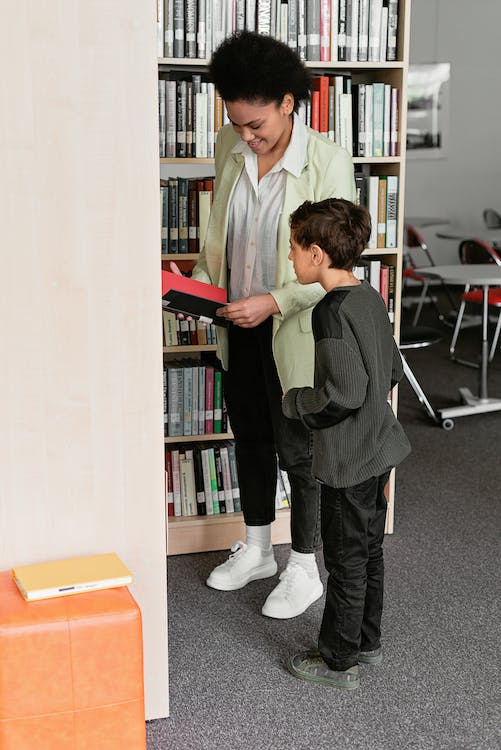India’s education system – India is a country that boasts of a rich cultural heritage and has made significant strides in various sectors. Unfortunately, however, the state of affairs leaves much to be desired regarding education. Despite being home to some of the best educational institutions in the world, India’s education system still faces several challenges. There are numerous opportunities for improvement in this critical sector, from inadequate infrastructure and insufficient funding to outdated curricula and an overreliance on rote learning techniques. In this blog, we will delve deeper into the state of India’s education system and explore ways to work together toward building a better future for our children.

India’s education system – Access and Equity: Addressing the Disparities in Educational Opportunities
The state of India’s education system is one of opportunity. With nearly 1.4 million schools and over 227 million students, the country has the potential to provide quality education to all its citizens. However, there are significant disparities in educational opportunities between different socioeconomic groups.
According to government data, only about 61% of Indian children aged 6-14 are enrolled in school. This figure drops to around 50% for children from disadvantaged backgrounds, such as those from scheduled tribes or castes or those living in rural areas.
There are also significant disparities in the quality of education received by different socioeconomic groups. Children from affluent families are likelier to attend private schools, which often have better facilities and teachers than public schools. Poor kids are more likely to drop out of school due to Lack of financial resources or because they need to work to support their families.
Even among those who finish school, educational outcomes are disparities. Higher-income students are more likely to pursue higher education and secure better jobs. In contrast, lower-income students often end up in low-skilled jobs with little opportunity for advancement.
The good news is that the Indian government has prioritized improving access and equity in education. The Right to Education Act guarantees free and compulsory education for all children aged 6-14. The government has also undertaken several initiatives to improve the quality of education offered in public schools.
India’s education system – Quality of Education: Enhancing Teaching and Learning Practices

The quality of education in India has been a source of concern for many years. While there have been some improvements in recent years, the overall quality of teaching and learning could be better. It is evident in the high dropout rates, low literacy rates, and poor performance on international assessments.
There are many reasons for the poor quality of education in India. One primary reason is the need for more adequate resources. Many schools need more classrooms, textbooks, or trained teachers. Another reason is the widespread use of rote learning methods. It means that students often need help understanding information. As a result, they need help to apply what they have learned to real-world situations.
The promising news is that there are many opportunities for improvement. The first step is to increase funding for education so that schools have the resources they need. Additionally, it is important to focus on quality rather than quantity in education. It means investing in teacher training and professional development, using data-driven instructional practices, and increasing student engagement through active learning strategies. By taking these steps, India can improve the quality of its education system and provide its citizens with the skills they need to succeed in the 21st-century economy.
India’s education system – Curriculum and Pedagogy: Redefining Education to Meet the Needs of the Future

It is no secret that the Indian education system desperately needs reform. Over the one-time few years, there have been many reports and articles highlighting the various deficiencies of the system, from poor infrastructure to a lack of quality teachers. However, while there is room for improvement, it is important to remember that the Indian education system has many strengths.
One of the biggest strengths of the Indian education system is its scale. India has over 1.3 billion people, and over 260 million are under 14. It means there is a vast potential market for educational products and services. Additionally, India has many English speakers, which gives it an advantage when providing online education content.
Another strength of the Indian education system is its diversity. India is home to various cultures and religions reflected in its schools and colleges. This diversity can be harnessed to create an environment where students from different backgrounds can learn from each other and benefit from different perspectives.
Finally, the Indian education system has a long history and tradition of excellence. Some of the world’s most prestigious universities, such as Delhi University and Bombay University, are in India. These institutions have produced some of India’s best minds, who have made significant contributions in fields such as science, medicine, engineering, and business.
India’s education system – Technology Integration: Harnessing Technology to Transform Education

Despite being family to some of the world’s leading educational institutions, India’s education system could be better. There are many areas where improvement is needed better to prepare students for the challenges of the 21st century. One such area is technology integration.
Harnessing technology in education can help to transform the learning experience and better equip students with the talents they need for success in a rapidly changing world. Technology can be used in many ways in education, including:
- providing access to information and resources that would otherwise be unavailable
- enhancing instructional delivery methods
- increasing opportunities for collaboration and communication
- facilitating assessment and feedback
When used effectively, technology has the potential to improve educational outcomes significantly. However, many barriers still exist to effective technology integration in India’s education system. These include:
- Lack of trained teachers
- Lack of appropriate infrastructure
- Lack of funding
- Cultural attitudes towards technology use
India’s education system – Public-private Partnerships: Collaborating for a Better Education System

Public-private partnerships are increasingly being seen as a method to improve the quality of education in India. By collaborating with the private sector, the government can tap into its resources and expertise to help improve the education system.
One example of a public-private partnership is the government’s tie-up with the Tata Group to set up the Indian Institute of Skills. This institute will provide world-class training in advanced manufacturing, automotive engineering, and aviation skills. The purpose is to create a pool of skilled workers who meet industry needs and help boost India’s competitiveness.
Another example is the government and Microsoft partnership to provide teachers with digital literacy training. It will help them use technology in teaching and make learning more engaging for students. The objective is to equip teachers with the skills they need to deliver quality education in a rapidly changing world.
Public-private partnerships can play a crucial role in improving the education system in India. By collaborating with the private sector, the government can access its resources and expertise to help upgrade infrastructure, enhance teacher training and create more innovative learning opportunities for students.
- Sports Betting Website Development – Analytics and Insights - July 13, 2024
- Why Regular best automobile detailing services Is a Must for Car Owners - May 15, 2024
- Catalog Printing – Businesses Have Just Got Better with Wholesale - October 5, 2023



Post Your Thoughts